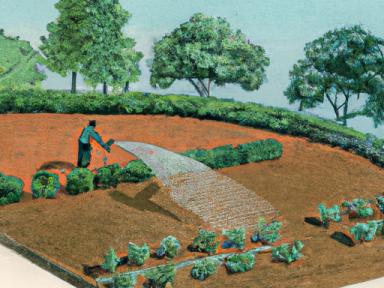Deep Watering Technique: Harnessing Hidden Water Efficiency
Picture this scenario: a major crisis strikes and water becomes a scarce resource. The taps run dry, leaving homes and gardens parched. In times of emergency, having the knowledge and tools to make the most efficient use of water is crucial for survival. One method that has stood the test of time in the world of gardening is deep watering. This old-time technique not only conserves water but also promotes healthier and more resilient plants. Today, we will explore the benefits of deep watering and how you can implement this technique in your own garden.
The Importance of Deep Watering
In the face of an impending disaster or a long-term water shortage, deep watering can be a game-changer. Unlike conventional watering methods, which only wet the surface of the soil, deep watering involves saturating the soil to a greater depth. By allowing water to penetrate deeply, plants develop stronger and more extensive root systems. This enables them to access water and nutrients from lower soil layers, increasing their resilience and ability to withstand drought conditions.
Furthermore, deep watering reduces water runoff and evaporation. Shallow watering often leads to water wastage as it evaporates quickly from the surface and runs off before it can penetrate the root zone. By contrast, deep watering ensures that water reaches the plant’s root system, minimizing waste and maximizing the water’s efficacy.
How to Implement Deep Watering
Implementing the deep watering technique in your garden is relatively simple. Here are the steps to follow:
- Choose the Right Watering Tool: Opt for a soaker hose or a drip irrigation system to deliver water directly to the soil and roots.
- Water Slowly: Set the flow rate of your watering tool to a slow drip. This allows water to penetrate deeply instead of pooling or running off.
- Water Deeply: Water your plants until the soil is saturated to a depth of at least 6 inches. This may require watering for a longer duration but will ensure proper hydration.
- Water Infrequently: Rather than watering lightly every day, deep water your plants every few days or as needed. This trains the roots to seek moisture deeper in the soil and promotes their long-term health.
- Mulch: Apply a layer of organic mulch, such as wood chips or straw, around your plants. Mulch helps conserve moisture by reducing evaporation, keeping the soil cool, and preventing weed growth.
The Long-Term Benefits
By practicing deep watering, you not only conserve water but also set the stage for a more sustainable and self-reliant future. As you cultivate healthier and stronger plants, they become more adept at surviving and thriving without excessive water or human intervention. Furthermore, the knowledge gained from implementing deep watering can be invaluable during times of crisis when water scarcity is a pressing concern.
Remember, preparing for the unexpected is not an act of fear but an act of empowerment. By adopting self-reliant practices like deep watering, you are equipping yourself with the skills necessary to thrive in any situation. Together, let’s embrace the power of deep watering and create a resilient future for ourselves and our gardens.




GIPHY App Key not set. Please check settings